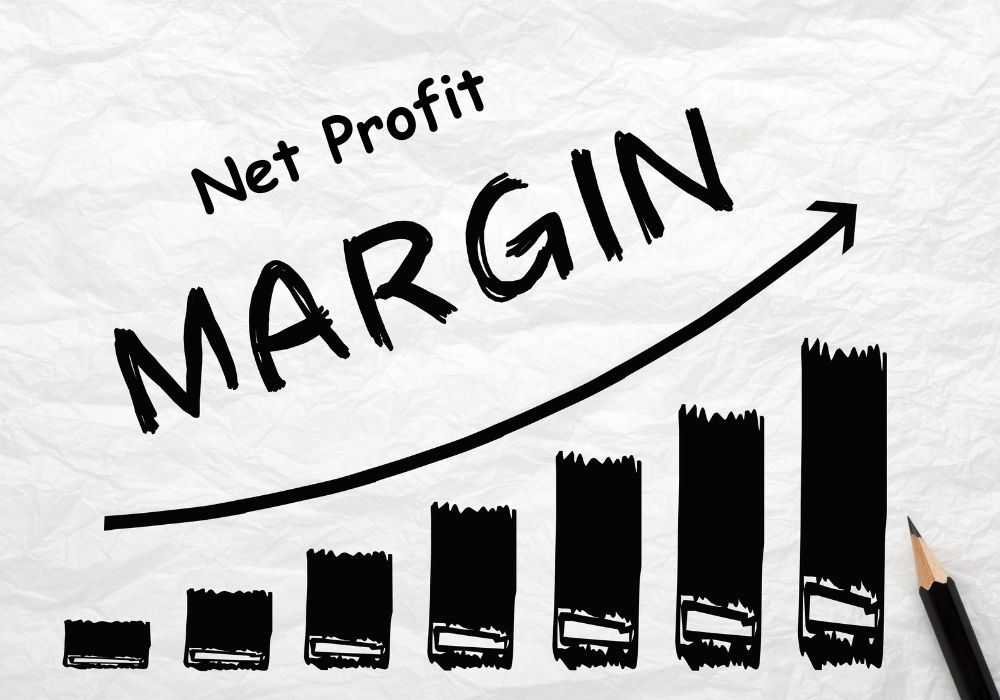- What Is Gross Profit?
- The Gross Profit Formula
- Step-by-Step Guide to Calculating Gross Profit
- Gross Profit Importance
- Examples of Gross Profit
- Example 1: Custom Furniture Store
- Example 2: Software Subscription Company
- Things To Avoid
- Gross Profit vs. Net Profit
- How to Use Gross Profit
- FAQs Gross Profit
- 1. What’s included in COGS?
- 2. Can gross profit be negative?
- 3. How often should gross profit be calculated?
- 4. What’s a good gross profit margin?
- 5. How does gross profit differ across industries?
- 6. Can gross profit help with tax planning?
- 7. How can a business improve gross profit?
- 8. Is gross profit the same as gross margin?
- 9. Why is gross profit important for startups?
- 10. Can gross profit be manipulated?
- Practical Tips for Tracking Gross Profit
- Real-World Applications
- The Bottom Line
Understanding gross profit is crucial for any business aiming to calculate its financial health. It’s a key metric that reveals how efficiently a company generates profit from its core operations before accounting for overhead costs.
This article breaks down the gross profit formula, provides practical examples, and answers common questions to help business owners, entrepreneurs, and students grasp this essential concept.
What Is Gross Profit?
Gross profit represents the money a business retains after subtracting the cost of producing or acquiring goods sold from its total revenue.
It focuses solely on variable costs directly tied to production, like raw materials or labor, ignoring fixed costs such as rent or utilities. This metric highlights a company’s ability to manage production costs and set profitable pricing.
A higher gross profit indicates better efficiency in turning sales into earnings. Knowing this figure helps businesses make informed decisions about pricing, inventory, and cost control.
The Gross Profit Formula
The formula for calculating gross profit is straightforward:
Gross Profit = Revenue – Cost of Goods Sold (COGS)
- Revenue: Total income from sales of goods or services before any deductions.
- Cost of Goods Sold (COGS): Direct costs of producing goods sold, including materials and labor.
This formula isolates the profit from core operations, excluding expenses like marketing or administrative costs. Accurate calculations require precise revenue and COGS figures, often sourced from financial records.
Step-by-Step Guide to Calculating Gross Profit
Calculating gross profit involves a few simple steps. Follow this process to ensure accuracy:
- Determine Total Revenue: Add up all income from sales during a specific period. Include only revenue from core business activities, excluding one-time gains.
- Calculate COGS: Sum the direct costs of producing goods sold. This includes raw materials, direct labor, and manufacturing supplies for that period.
- Apply the Formula: Subtract COGS from revenue to find gross profit. Double-check numbers to avoid errors.
- Analyze the Result: A positive gross profit shows revenue exceeds production costs. A negative result signals potential pricing or cost issues.
Using consistent periods (e.g., monthly or yearly) ensures reliable comparisons. Software like QuickBooks or Excel can streamline tracking and calculations.
Gross Profit Importance
Gross profit serves as a snapshot of a business’s operational efficiency. It shows how well a company converts sales into profit before other expenses.
A strong gross profit allows more funds for operating costs, investments, or debt repayment. It also helps assess pricing strategies and production efficiency.
Comparing gross profit over time or against industry benchmarks reveals trends and competitive standing.
Examples of Gross Profit
To illustrate, consider two fictional businesses: a custom furniture store and a software subscription company. These examples clarify how to apply the formula in different contexts.
Example 1: Custom Furniture Store
A small furniture store sells handcrafted tables. In one month, it racks up $50,000 in sales revenue from 100 tables. Each table requires $300 in wood, hardware, and labor to produce.
- Revenue: $50,000 (100 tables sold at $500 each).
- COGS: $300 × 100 = $30,000 (cost of materials and labor).
- Gross Profit: $50,000 – $30,000 = $20,000.
The store’s gross profit is $20,000, meaning it retains $20,000 after production costs. This covers rent, utilities, and other expenses.
Example 2: Software Subscription Company
A tech company offers a project management tool with a monthly subscription. It earns $100,000 from 2,000 subscribers paying $50 each. COGS includes server costs ($10,000) and customer support wages ($15,000).
- Revenue: $100,000 (2,000 subscribers × $50).
- COGS: $10,000 (servers) + $15,000 (support) = $25,000.
- Gross Profit: $100,000 – $25,000 = $75,000.
The company’s gross profit of $75,000 shows strong profitability before marketing or development costs.
These examples highlight how gross profit varies by industry but follows the same formula. Accurate COGS tracking is critical for reliable results.
Things To Avoid
Calculating gross profit seems simple, but errors can skew results. Watch for these traps:
- Including Non-Revenue Income: Exclude one-time payments, like asset sales, from revenue. Only sales from goods or services count.
- Misclassifying COGS: Include only direct production costs in COGS. Rent or marketing expenses belong in operating costs.
- Inconsistent Periods: Ensure revenue and COGS cover the same period to avoid distorted figures.
- Ignoring Inventory Changes: For businesses with inventory, account for beginning and ending stock to calculate COGS accurately.
Using accounting software or consulting a bookkeeper can minimize these errors and ensure precise calculations.
Gross Profit vs. Net Profit
Gross profit differs from net profit, another key metric. While gross profit focuses on revenue minus COGS, net profit accounts for all expenses, including operating costs, taxes, and interest.
For example, the furniture store’s $20,000 gross profit might shrink to $5,000 net profit after rent, salaries, and taxes. Understanding both metrics provides a fuller picture of financial performance.
How to Use Gross Profit
Gross profit informs several business decisions:
- Pricing Adjustments: If gross profit is low, consider raising prices or negotiating better supplier deals.
- Cost Management: High COGS may signal inefficient production or overpriced materials.
- Budget Planning: Allocate gross profit to cover operating expenses, investments, or debt.
- Benchmarking: Compare gross profit margins (gross profit ÷ revenue) to industry averages to gauge competitiveness.
Regularly analyzing gross profit helps businesses stay agile and profitable.
FAQs Gross Profit
Below are answers to common questions about gross profit, designed to clarify lingering doubts.
1. What’s included in COGS?
COGS includes direct costs like raw materials, direct labor, and manufacturing supplies. It excludes indirect costs like rent, utilities, or marketing.
2. Can gross profit be negative?
Yes, if COGS exceeds revenue, gross profit is negative, indicating a loss on core operations. This often signals pricing or cost issues.
3. How often should gross profit be calculated?
Calculate gross profit monthly, quarterly, or annually, depending on business needs. Regular calculations help track trends and inform decisions.
4. What’s a good gross profit margin?
Gross profit margin varies by industry. Tech companies often have high margins (70–80%), while retail may range from 20–50%. Compare to industry benchmarks.
5. How does gross profit differ across industries?
Industries with high material costs, like manufacturing, often have lower gross profit margins than service-based businesses, like software, with minimal COGS.
6. Can gross profit help with tax planning?
Gross profit itself isn’t taxed, but it informs net profit, which is. Accurate gross profit calculations ensure reliable tax reporting.
7. How can a business improve gross profit?
Increase revenue through higher prices or sales volume, or reduce COGS by optimizing production or negotiating supplier discounts.
8. Is gross profit the same as gross margin?
No. Gross profit is a dollar amount (revenue – COGS). Gross margin is a percentage (gross profit ÷ revenue), showing profitability relative to sales.
9. Why is gross profit important for startups?
Startups use gross profit to assess scalability. A strong gross profit indicates potential to cover growing operating costs as the business expands.
10. Can gross profit be manipulated?
Misreporting revenue or COGS can distort gross profit. Ethical accounting practices and regular audits prevent manipulation and ensure accuracy.
Practical Tips for Tracking Gross Profit
To make gross profit calculations easier, consider these strategies:
- Use Accounting Software: Tools like Xero or FreshBooks automate revenue and COGS tracking, reducing errors.
- Maintain Detailed Records: Log all sales and production costs meticulously to ensure accurate inputs.
- Review Regularly: Check gross profit monthly to spot trends early and adjust strategies as needed.
- Consult Professionals: Work with accountants to verify COGS and ensure compliance with accounting standards.
Real-World Applications
Gross profit isn’t just a number—it’s a tool for growth. A furniture store might use it to decide whether to source cheaper wood without sacrificing quality.
A software company could analyze gross profit to justify investing in new servers. By focusing on this metric, businesses gain clarity on what drives profitability and where improvements are needed.
The Bottom Line
Mastering gross profit calculations empowers businesses to make smarter decisions. By understanding the formula, avoiding common mistakes, and applying insights from examples, anyone can use this metric to boost efficiency and profitability.
Whether running a small shop or a tech startup, gross profit offers a clear view of financial health, guiding strategies for long-term success. Regular tracking and analysis ensure businesses stay on the growth path.







